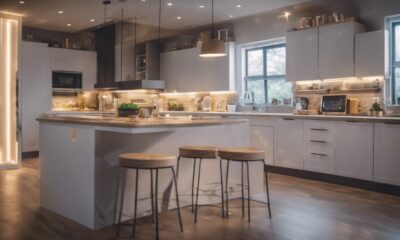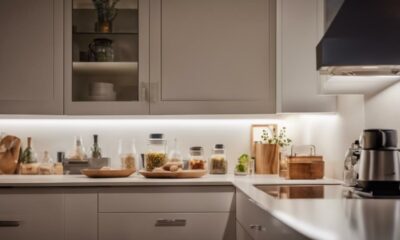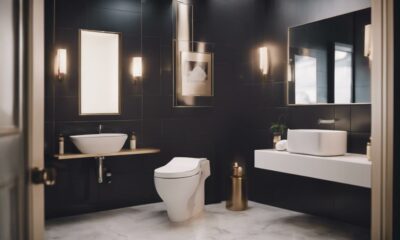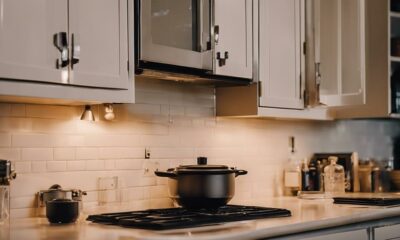Interior
Does Interior Paint Color Affect Temperature
Affecting room temperature, interior paint colors can create a cozy or cool ambiance – find out how your color choice impacts comfort!
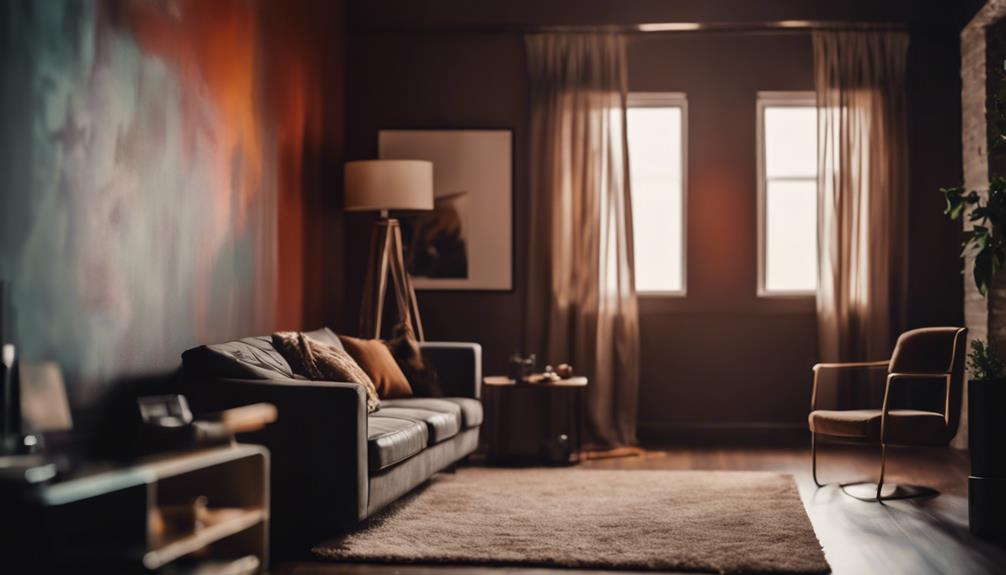
Yes, interior paint color affects temperature! Dark colors like deep blues absorb heat, making rooms warmer. Light shades reflect light, keeping things cooler, impacting room temperature. Light colors bounce heat away, while dark ones soak it in. Bright hues help maintain cooler temps, while darker tones may raise them. Your color choice can influence lighting needs and the overall comfort of your space. Factors like room size and natural light availability play a role. So, be mindful when picking colors for temperature control as it can impact how you feel in a room!
Key Takeaways
- Dark paint colors absorb more light, raising indoor temperatures.
- Light paint colors reflect light, keeping rooms cooler.
- Color impacts heat absorption and room temperature.
- Lighter shades reduce heat absorption, darker colors absorb more light.
- Room size, natural light, and preferences influence color choice for temperature control.
Impact of Dark Paint Colors
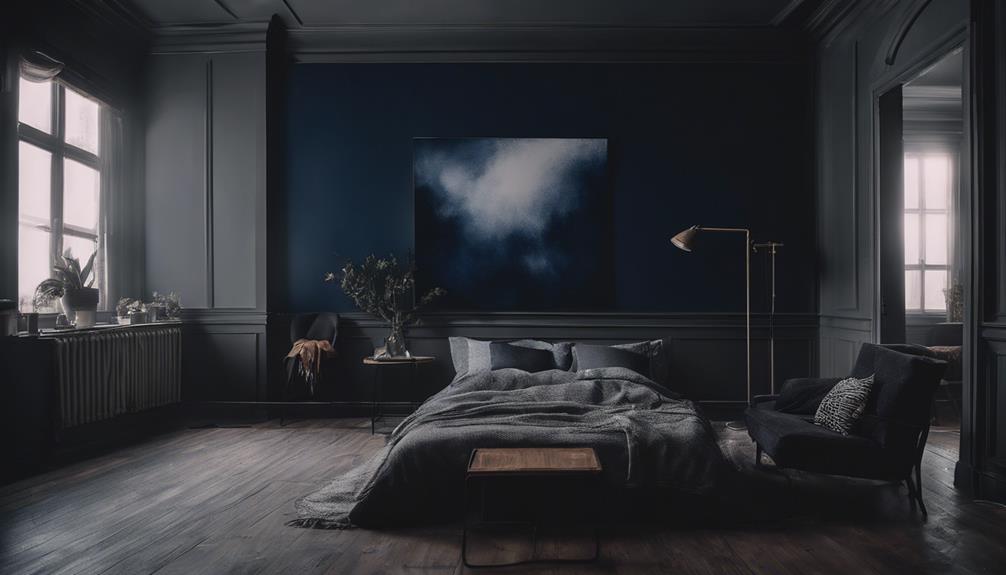
Dark interior paint colors, such as deep blues and browns, can markedly impact the temperature of a room by absorbing more light and heat. When the sun shines through your windows, these dark hues soak up the light, warming up your space like a cozy blanket. Imagine your room as a sponge, with dark paint colors eagerly drinking in the sunlight's warmth. This absorption of light and heat is like a toasty embrace, especially during chilly days.
However, while these dark colors create a snug and intimate ambiance, they can also lead to higher indoor temperatures. It's like wearing a dark shirt on a sunny day—the color absorbs the sun's rays, making you feel warmer. So, if you live in a place with scorching summers, you might want to take into account the exterior paint colors of your home. Dark colors on the outside can also absorb heat, making your house warmer overall. Just like choosing your outfit based on the weather, selecting the right paint color can help regulate the temperature of your home.
Influence of Light Paint Colors
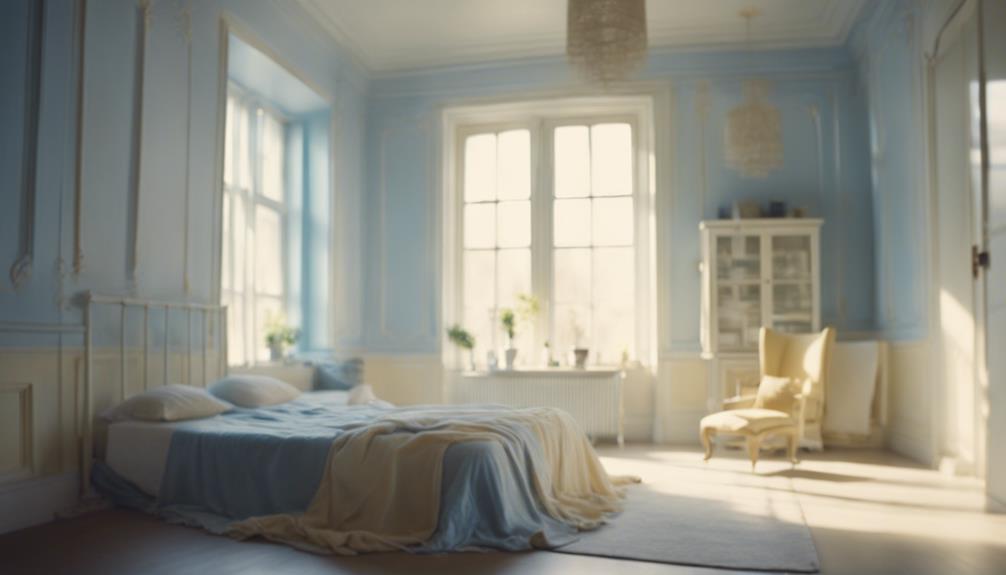
Light interior paint colors, such as white or pastels, reflect more light, helping to keep your room cooler. By opting for lighter shades, you can potentially reduce your reliance on artificial lighting and save on energy costs.
Embracing light colors not only creates an airy atmosphere but also indirectly impacts the room's temperature by reflecting light and heat.
Light Colors Reflect Heat
How does the choice of interior paint colors impact the temperature inside your home?
Light colors, such as white, beige, or light pastels, play a significant role in reflecting heat and maintaining a cooler environment. By opting for light interior paint, you can reduce the need for extra cooling measures as these colors reflect more light, helping to keep your house cooler.
Additionally, light paint colors can create a more open and airy feel in your space, enhancing overall comfort. Not only do these colors contribute to a visually appealing aesthetic, but they also indirectly impact the temperature by reflecting heat away.
Cooler Room With Light
Choosing light interior paint colors for your rooms can greatly impact the overall temperature, creating a cooler and more revitalizing environment in your home. Light colors like white, beige, or pastels reflect more light, helping to keep rooms cool. By opting for lighter paint shades, you reduce the need for additional artificial lighting, which can generate extra heat.
Lighter paint colors not only contribute to a cooler temperature but also make rooms feel more spacious and airy. This perception of openness enhances the feeling of coolness in your home. Combine light interior paint colors with proper insulation for maximum cooling effects.
Transform your space into a visually invigorating and cooler oasis by painting your rooms with light hues.
Understanding Color Absorption
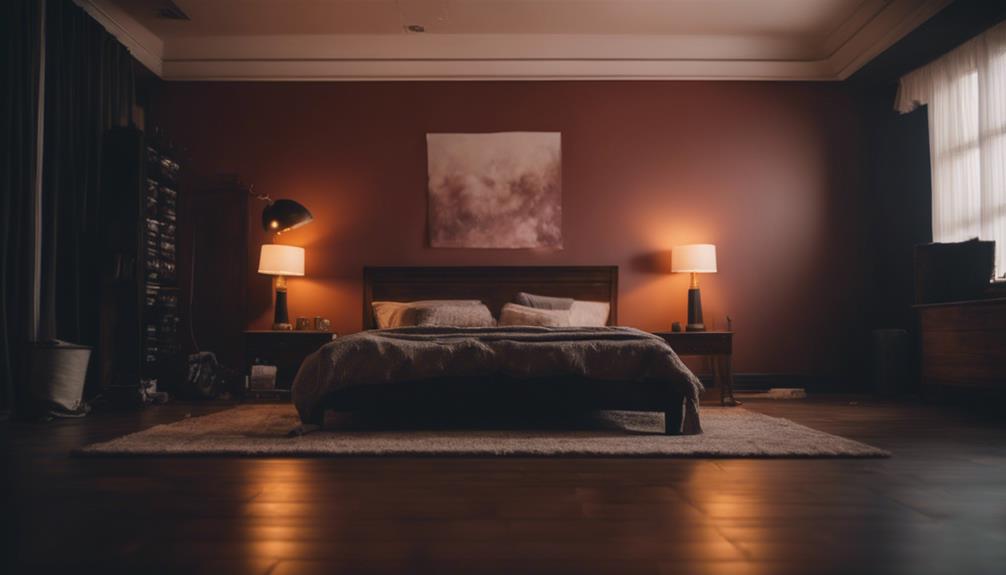
Understanding color absorption within interior paint is essential for grasping its impact on room temperature. The color of your walls can affect how much heat they absorb or reflect. Lighter colors such as white or beige tend to reflect more light, which can help in reducing heat absorption and keeping the room cooler.
On the other hand, darker colors absorb more light, potentially leading to increased heat in the room. This absorption and reflection of light by different paint colors play a role in determining the overall temperature of a space.
By choosing lighter colors for your interior paint, you can potentially decrease the need for artificial lighting, thereby minimizing the heat generated by light fixtures. Keep in mind that the impact of paint color on temperature is also influenced by factors like insulation and natural light levels in the room.
Reflective Properties of Paint
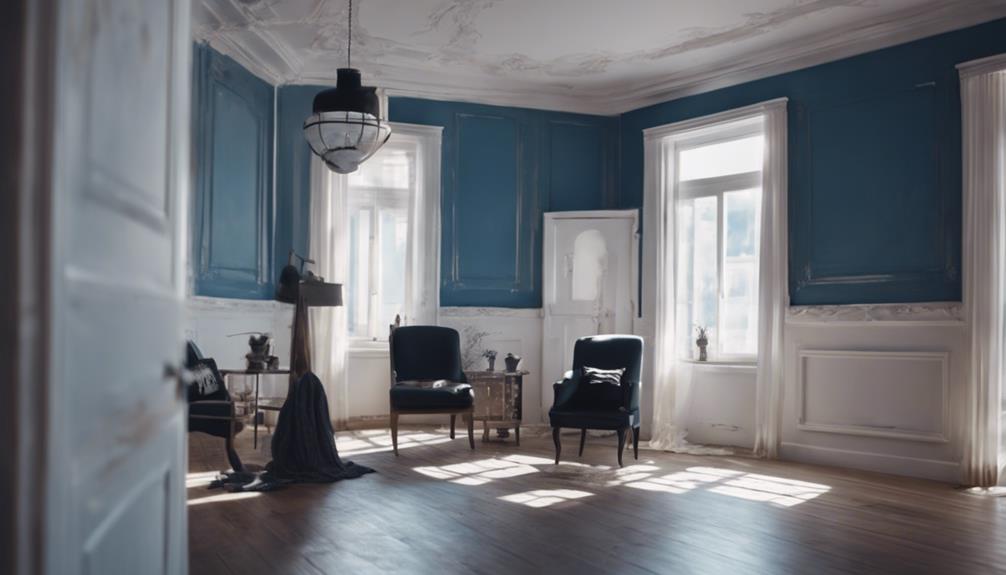
When considering the reflective properties of paint, it's important to understand how light colors bounce heat away, while darker shades tend to absorb it. This play of light absorption and reflection impacts the room's temperature and energy efficiency.
Paint Light Absorption
Light interior paint colors with higher reflective properties can effectively bounce light off surfaces, helping to maintain cooler room temperatures. When choosing paint colors, consider how they impact light absorption and reflection. Lighter hues like whites and pastels reflect more light, reducing heat absorption and creating a brighter space. On the other hand, darker shades such as deep blues and browns absorb more light, potentially increasing heat absorption and room temperature. To illustrate the differences in light absorption and reflection, let's compare light and dark paint colors in the table below:
| Property | Light Interior Paint Colors | Dark Interior Paint Colors |
|---|---|---|
| Light Absorption | Low | High |
| Heat Absorption | Reduced | Increased |
| Room Temperature | Cooler | Warmer |
| Light Reflection | High | Low |
Heat Reflection Efficiency
To enhance the cooling effect in your space, consider the reflective properties of interior paint, particularly its heat reflection efficiency. Lighter interior paint colors, such as white, beige, and light pastels, have higher reflective properties that bounce light off surfaces, helping to keep a room cooler.
When painting your interior walls, opting for these lighter shades can contribute to maintaining a comfortable room temperature. On the other hand, darker interior paint colors tend to absorb more light and heat, potentially raising the room's temperature.
Color Impact on Warmth
Reflect on how the color of your interior paint can directly influence the warmth of your living space. Light-colored surfaces, such as white or pastel interior paints, reflect more of the sun's radiant energy, helping to cool your home by reducing the amount of heat your home absorbs.
On the other hand, dark colors in interior paint absorb more light, potentially leading to a warmer environment. By opting for lighter interior colors, you can decrease the need for artificial lighting and contribute to a cooler atmosphere in your home.
Keep in mind, the exterior paint color can also play a role in how much heat is absorbed, so it's crucial to contemplate how both interior and exterior colors interact with natural light to regulate your room's temperature effectively.
Color Selection for Temperature Control
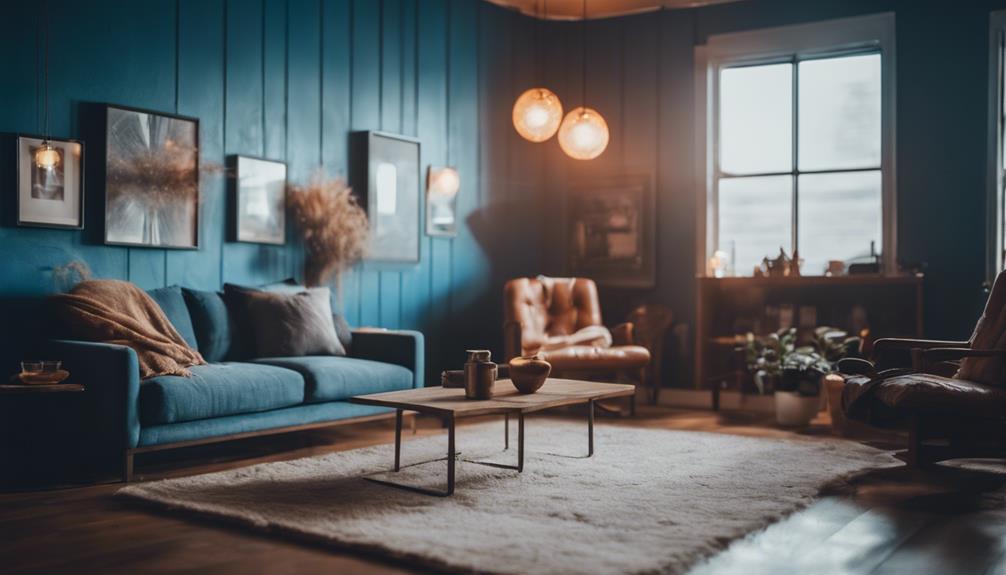
For crucial temperature control in your home, the selection of interior paint colors plays an important role in creating a comfortable living environment. Lighter interior paint colors such as white, beige, or light pastels reflect more light, helping to maintain a cooler temperature indoors.
On the other hand, darker interior paint colors tend to absorb more light, potentially increasing heat within the house and affecting the overall temperature. The color you choose can indirectly impact the need for artificial lighting and influence the temperature within your home.
By carefully selecting interior paint colors that reflect light and manage heat absorption, you can contribute to a more comfortable living space. When deciding on colors, consider factors like room size, natural light availability, and your personal preferences.
These elements play a significant role in determining how interior paint colors can help you control the temperature in your home effectively.
Room Size and Color Impact
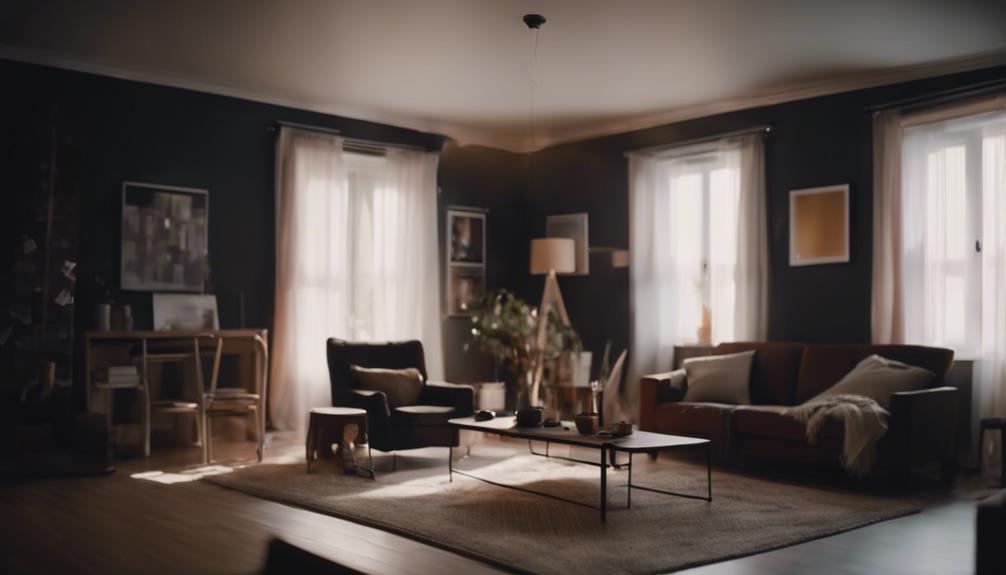
The impact of room size on how paint color influences temperature perception can greatly affect the ambiance of your living space. In a smaller room, the choice of paint color plays an essential role in creating the illusion of space. Lighter interior paint colors, such as soft pastels or whites, can make a small room feel more open and airy. These light colors tend to reflect more light, helping to brighten up the space and create a sense of expansiveness.
Conversely, in a larger room, dark interior paint colors can be used to evoke a cozy and intimate atmosphere. Dark colors, like deep blues or rich browns, may absorb light, making the room feel warmer and more inviting. They can also help to visually shrink the space, creating a more intimate setting for gatherings or relaxation.
Natural Light Considerations
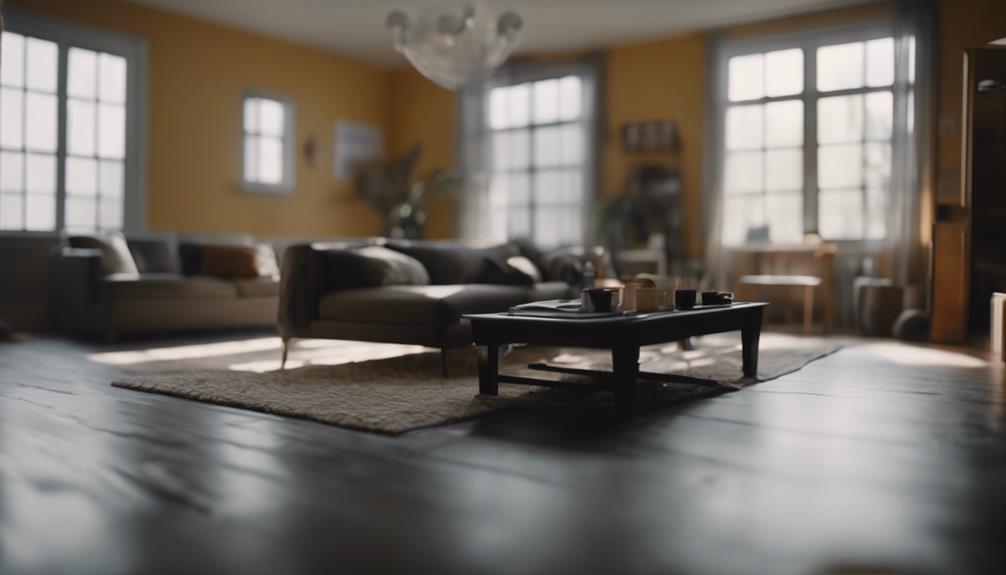
When selecting interior paint colors, bear in mind how natural light interacts with different shades to impact the temperature and overall feel of a room. Lighter colors such as white or beige have a significant ability to reflect light, making them great choices if you want to keep your space cooler. Conversely, darker colors tend to absorb more light, which can result in a warmer environment. Natural light is an essential element to take into account when deciding on the perfect paint color for your room. By understanding how light interacts with different shades, you can create a space that not only looks beautiful but also maintains a comfortable temperature.
To optimize natural light levels and create a cozy atmosphere, think about how the sunlight enters your room throughout the day. By selecting the right paint color that works harmoniously with natural light, you can transform your space into a welcoming haven that suits your style and keeps you feeling just right.
Creating a Comfortable Environment
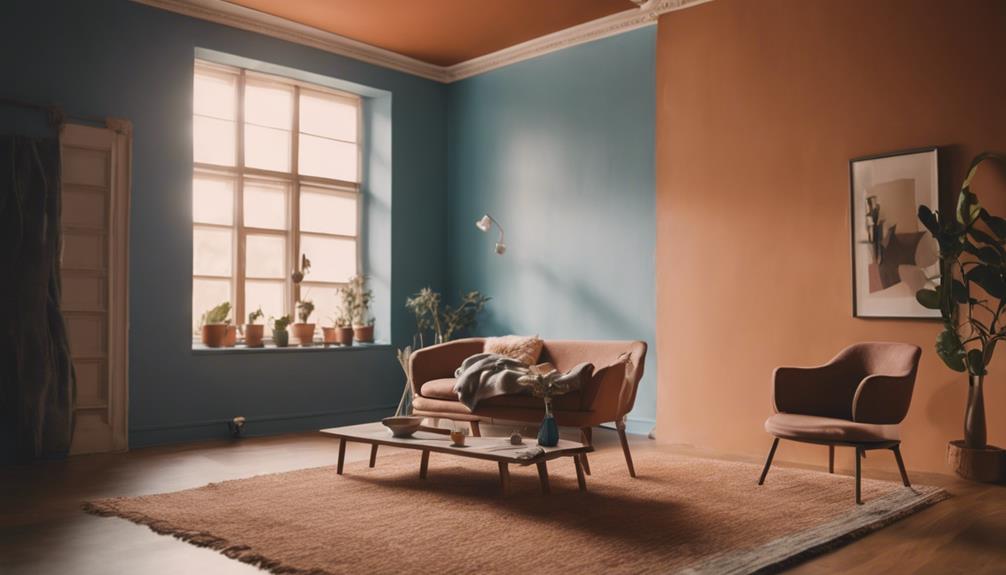
When it comes to creating a comfortable environment in your living space, the colors you choose for your walls play an essential role. Lighter colors like white, beige, or soft pastels can help keep the room feeling cooler, while darker shades may absorb more heat, potentially warming up the space.
Color Impact on Temperature
Choosing the appropriate interior paint color can greatly impact the temperature of your living space, creating a comfortable environment conducive to your needs. When considering the color impact on temperature, keep in mind the following:
- Lighter colors like white and beige reflect more light, helping to maintain a cooler temperature.
- Darker colors absorb more light, potentially increasing the heat in a room.
- The choice of interior paint color interacts with factors like insulation and natural light, affecting the overall temperature of your home.
Psychological Effects of Colors
Considering the impact of interior paint color on temperature, it's vital to comprehend how different colors can influence the psychological atmosphere of a room, ultimately affecting your comfort and well-being.
Cooler colors like blues and greens have the power to create a sense of relaxation and can lower the perceived temperature in a space. On the other hand, warm colors such as reds and oranges can make a room feel cozier and warmer, enhancing a sense of comfort.
Lighter paint colors contribute to making a room feel more open and airy, which can enhance the perception of a cooler environment. Understanding the psychological effects of interior paint colors can help you create a space that promotes comfort and relaxation.
Choosing Calming Paint Colors
Lighter interior paint colors like white, beige, or light pastels can create a cooler ambiance in a room, enhancing the overall comfort and relaxation.
When choosing calming paint colors for your space, consider soft shades of blue, green, or lavender to promote tranquility. These colors can help you unwind after a long day and create a soothing atmosphere.
Dark interior paint colors, on the other hand, tend to absorb more heat, potentially making the room feel warmer and less comfortable for relaxation.
Paint Color and Energy Efficiency

When considering interior paint colors, keep in mind that the choice you make can impact the energy efficiency of your home. Light interior paint colors like white, beige, or pastels reflect more light, assisting in keeping your home cooler. On the other hand, dark interior paint colors can absorb light, potentially increasing heat and the necessity for cooling systems. This choice indirectly affects the amount of energy required for cooling and heating your home. Lighter interior paint colors can reduce the need for artificial lighting, contributing to energy efficiency. Remember, proper insulation and other factors in your home also play a significant role in how interior paint colors influence temperature regulation.
| Light Color Benefits | Dark Color Drawbacks |
|---|---|
| Reflect more light | Absorb light, increase heat |
| Assist in cooling | Raise the need for cooling |
| Reduce energy consumption | Enhance reliance on cooling |
| Create a brighter space | Potentially higher energy bills |
| Enhance energy efficiency | Increase artificial lighting needs |
Best Practices for Paint Selection
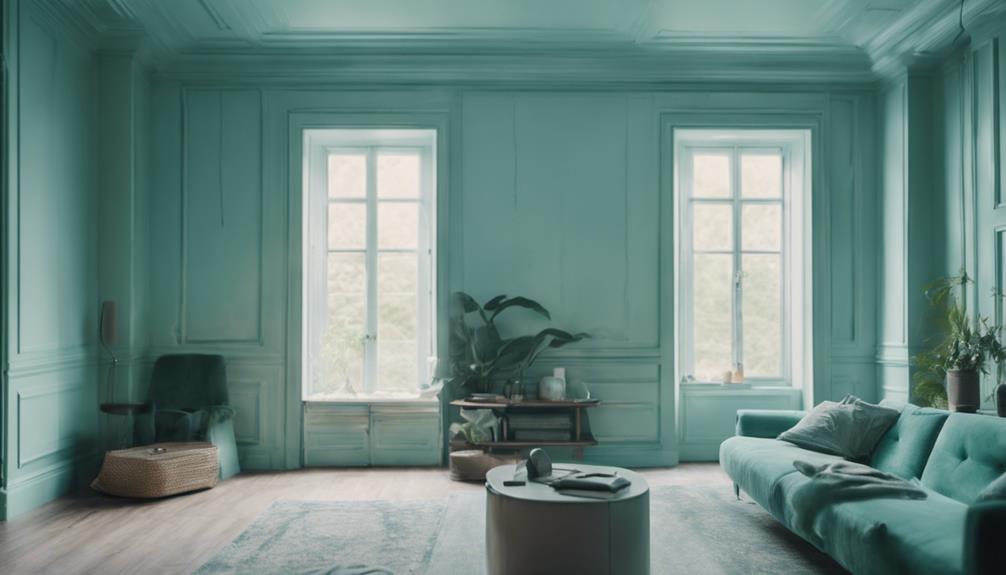
For ideal results in selecting paint colors, consider evaluating your room's size and natural light availability to enhance temperature control and overall comfort in your home. When choosing interior paint colors, keep in mind how they can affect room temperature. Here are some best practices for paint selection:
- Light colors like white, beige, or pastels reflect more light, helping to maintain a cooler temperature in a room.
- Dark colors absorb light and may generate more heat, potentially impacting the room's temperature.
- Take into account the natural light available in the room, as this can influence how the paint color interacts with light to affect the overall temperature.
Frequently Asked Questions
Does Interior Color Affect Temperature?
When you choose interior paint colors, you impact more than just aesthetics. Lighter colors like white or beige reflect light, helping keep your room cool. In contrast, darker hues absorb light, potentially raising the temperature.
Your color choice interacts with natural light and insulation, affecting how warm or cool a room feels. Opt for lighter shades to reduce the need for extra lighting, which can influence temperature regulation.
Can Paint Color Make a Room Hotter?
Choosing a darker interior paint color can indeed make a room feel hotter as dark colors absorb more light and heat, raising the temperature. On the other hand, lighter paint colors reflect light, helping to keep a room cooler.
Does Dark Interior Paint Make Your House Hotter?
Choosing dark interior paint colors can indeed make your house feel warmer. These hues absorb more light and heat, creating a cozy ambiance but potentially raising room temperatures. Lighter shades reflect light, helping maintain a cooler interior.
Consider the balance between aesthetics and climate control when selecting paint colors. Remember, dark colors may contribute to a warmer environment, so take into account the room's insulation and natural lighting for a comfortable living space.
How Much Does Paint Color Affect House Temperature?
Choosing the right interior paint color can indeed impact your house temperature. Lighter colors, like white, reflect more light, reducing the need for additional lighting that can generate heat. On the other hand, darker colors might require more artificial lighting, potentially affecting the overall temperature.
Factors like insulation, natural light, and design elements play a role too. Opting for lighter hues can help lessen the need for extra lighting and influence your home's temperature.
Conclusion
So, next time you're choosing a paint color for your room, remember that it's not just about style – it can also affect the temperature.
Whether you go for a cozy dark hue or a bright, light shade, your choice can impact the warmth of your space.
Keep in mind how colors absorb and reflect light, and consider the natural light in your room.
By selecting the right paint color, you can create a comfortable environment that suits your needs perfectly. Choose wisely!
Interior
Where Can I Get an Interior Car Wash
Just discovered the perfect spot in Houston for an exceptional interior car wash, with top-notch detailing services that will leave you amazed!

Are you in search of an outstanding interior car wash in Houston? YRK CUSTOMZ offers top-notch interior detailing services for cars and SUVs starting at just $86.40. This service includes thorough cleaning of seats, carpets, and dashboards, ensuring a fresh and healthy environment. Car Toys also provides interior detailing with O3-Ozone treatment, while Indris Car SPA specializes in sedans and coupes at $172.50. You can also enjoy perks like leather cleaning and tire shining for that extra sparkle. These detailed services range from $75 to $250, catering to your budget and specific needs. Are you ready to enhance your car’s interior cleanliness and aesthetics?
Key Takeaways
- YRK CUSTOMZ offers interior detailing for cars and SUVs at a discounted price of $86.40.
- Car Toys provides an interior detailing package with O3-Ozone treatment.
- Indris Car SPA specializes in sedan/coupe detailing services at a discounted price.
- Xcellent Mobile Services offers a 5.0-star rated exterior detail package for $100.
- Quoontry provides a combined interior and exterior detailing service at a 31% discount for $138.
Houston's Premier Interior Car Wash Services

Seeking high-quality interior car wash services in Houston? When it comes to keeping your car's interior clean and fresh, focusing on interior cleaning and floor mats is essential. Houston offers a variety of options to cater to your car's needs.
YRK CUSTOMZ, located just 17.6 miles from Houston, provides interior detailing for cars and SUVs at a discounted price of $86.40. This service includes thorough cleaning of your vehicle's interior, ensuring that every nook and cranny is spotless.
Additionally, Car Toys, situated 17.1 miles from Houston, offers an interior detailing package with O3-Ozone treatment, perfect for eliminating odors and bacteria.
Don't forget about your floor mats, as they can accumulate dirt and grime quickly. Indris Car SPA, located in Houston, provides sedan/coupe detailing services at a discounted price of $172.50, ensuring that your floor mats are cleaned and restored to their original condition.
Keeping your car's interior clean not only enhances its appearance but also promotes a healthier environment for you and your passengers.
Professional Interior Detailing Near You

Looking for expert interior detailing services near Houston? Professional interior detailing goes beyond a regular car wash, focusing on a thorough clean of your vehicle's interior. Top-rated auto detailing services in Houston offer detailed interior cleaning for cars and SUVs, ensuring your vehicle looks and feels fresh.
These services typically include meticulous cleaning of seats, carpets, and the dashboard, leaving no corner untouched. Prices for interior detailing can vary, ranging from $75 to $250, with some providers offering discounts for bundled services. Additionally, many places provide extra perks such as leather cleaning, trim shining, and tire shining to give your car that extra sparkle.
Conveniently located in or near Houston, these interior detailing locations make it easy for you to keep your vehicle in top condition. When searching for professional interior detailing near you, these services are a great option to keep your car looking its best inside and out.
Expert Interior Car Cleaning Solutions

For a thorough clean inside your vehicle, consider expert interior car cleaning solutions that encompass meticulous vacuuming, shampooing seats, carpets, and floor mats, along with cleaning plastic and leather surfaces. These services go beyond a simple wipe down, ensuring a deep cleanse to remove dirt, stains, and odors from every nook and cranny of your car's interior. Expert cleaners will often start by removing all loose items from your vehicle before diving into the cleaning process. They pay special attention to details like streak-free windows and mirrors, using specialized equipment to achieve a meticulous finish.
Prices for these interior cleaning services can vary based on the size and condition of your vehicle. Typically, small vehicles may range from $200 to $240, while larger vehicles could cost between $260 and $340. Some providers even offer mini-interior detail packages for regular upkeep, while others provide thorough cleaning processes to restore your interior to its best condition. These expert services use trusted brands and tools to tackle different cleaning situations efficiently, ensuring your car looks and feels fresh and clean.
Convenient Interior Car Wash Options

Consider exploring a variety of convenient options for interior car wash services to keep your vehicle looking fresh and clean. If you're in Houston, you can check out YRK CUSTOMZ, located just 17.6 miles away, offering detailed interior cleaning for cars and SUVs.
For a mobile exterior detail package for your car or small SUV, Xcellent Mobile Services in Houston could be a great choice.
Car Toys provides an interior detailing package with O3-Ozone treatment, ensuring a thorough clean for your vehicle.
If you have a sedan or coupe, Indris Car SPA specializes in detailing services tailored to these types of vehicles in Houston.
Another option is Quoontry, which is only 5.3 miles from Houston and offers detailed interior and exterior detailing services.
With these convenient options, keeping your car's interior looking spotless has never been easier.
Top-Rated Interior Car Wash Providers

Exploring the top-rated interior car wash providers can help you find the ideal service for keeping your vehicle in pristine condition. YRK CUSTOMZ stands out with a 4.7-star rating and a discounted price of $86.40 for their interior detailing services for cars and SUVs.
If you prefer a mobile service, Xcellent Mobile Services might be the perfect choice, offering a flawless 5.0-star rating for their exterior detail package for cars or small SUVs at a discounted price of $100.
Car Toys, with a 3.6-star rating, provides an interior detailing package that includes O3-Ozone treatment, all for a discounted price of $79.99.
Looking for sedan/coupe detailing? Indris Car SPA offers this service with a 31% discount, priced at $172.50.
For a combined interior and exterior detailing service, Quoontry could be your go-to, with a 31% discount, priced at $138. Make sure to choose the provider that best suits your car's needs and your budget to keep it looking its best.
Frequently Asked Questions
How Can I Clean My Car Interior Cheaply?
To clean your car interior cheaply, utilize household items like vinegar, baking soda, and dish soap. These DIY solutions work wonders on stains, odors, and grime.
Regular vacuuming, wiping, and spot treating keep your car tidy without breaking the bank. Opt for microfiber cloths, soft brushes, and gentle cleaners to protect surfaces.
Look for budget-friendly cleaning kits or multipurpose cleaners for a fresh interior on a dime.
What Can I Wash the Interior of My Car With?
You can wash the interior of your car with mild soap, water, and specialized cleaners. Use microfiber cloths or brushes on surfaces like seats, dashboard, and door panels. Avoid harsh chemicals to prevent damage.
Vacuum before cleaning to remove dirt and debris. Regular maintenance preserves your car's value and condition.
How Much Is Car Detailing in Houston?
Car detailing prices in Houston vary from $56.25 to $172.50, including discounts. Popular services like interior detailing and exterior wash packages are available at reduced rates. Different centers offer various service levels and pricing options. Discounts and promotions help make car detailing more affordable.
Prices can differ based on the vehicle type and detailing needed. Check out the deals in Houston to get your car looking fresh without breaking the bank!
How Often Should You Wash Your Car Interior?
You should wash your car's interior every 1-3 months for regular maintenance. If pets or kids are frequent passengers, consider cleaning more often to remove dirt, hair, and spills.
High-traffic vehicles or those with odors might benefit from washing every 2-4 weeks to keep things fresh. Professional detailing services offer deep cleaning, including carpet shampooing and leather conditioning.
Regular interior washing not only enhances looks but also guarantees a healthier driving experience.
Conclusion
In search of a fantastic interior car wash in Houston? Your quest ends here! Our top-rated providers offer professional interior detailing services that will leave your car looking spotless and fresh.
With convenient options available near you, getting your car cleaned has never been easier. Don't hesitate any longer to give your car the TLC it deserves.
Book an interior car wash today and experience the difference for yourself!
Interior
Where Is Alana Interiors
Tucked away in the vibrant Pinehurst Retail Park, Alana Interiors awaits with a stunning collection of home furnishings that will transform your space…

Located in the bustling Pinehurst Retail Park in Lurgan, Northern Ireland, Alana Interiors is a delightful store offering a wide selection of chic modern designs and timeless classics for your home. With a serene ambiance and diverse product range, Alana Interiors welcomes you to explore and find the perfect pieces to elevate your living spaces. If you’re looking for unique and stylish interior pieces, be sure to visit Alana Interiors for a one-of-a-kind shopping experience!
Key Takeaways
- Located in Pinehurst Retail Park, Lurgan, Northern Ireland
- Part of a bustling retail hub with diverse shopping experiences
- Easily accessible by car with ample parking facilities
- Clear signs direct visitors to Alana Interiors
- Situated near the M1 motorway, Lurgan Park, and Craigavon Lakes
Location of Alana Interiors
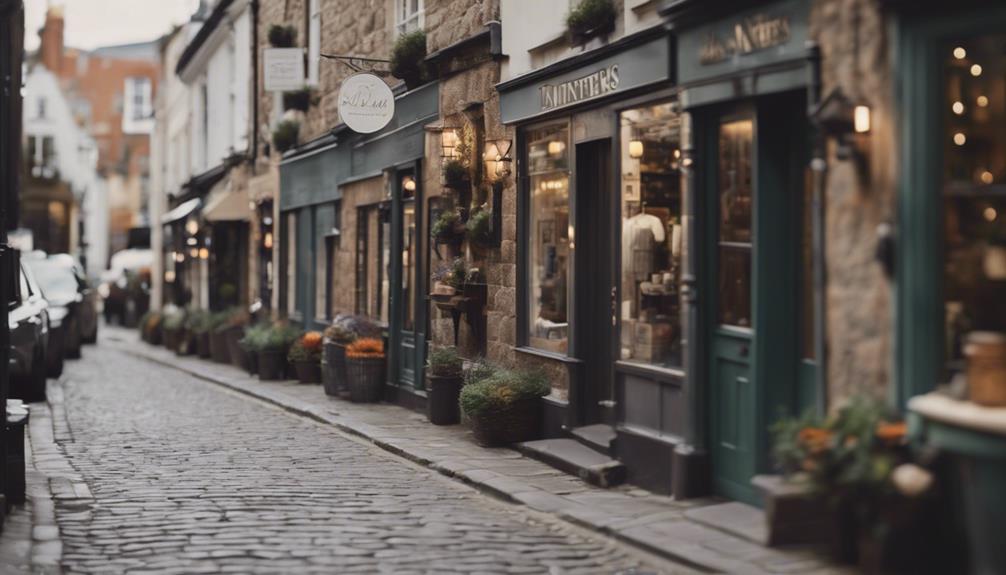
Alana Interiors sits nestled in the Pinehurst Retail Park in Lurgan, Northern Ireland, offering a convenient shopping destination for all. As you step into Alana Interiors, you're greeted by a world of exquisite home interiors that promise to transform your living spaces. The store is renowned for its stunning collection of furniture, decor pieces, and accessories that cater to a variety of tastes and styles.
At Alana Interiors, you can immerse yourself in a domain of creativity and inspiration, exploring the latest trends in interior design. Whether you're looking to revamp your living room, spruce up your bedroom, or add a touch of elegance to your dining area, Alana Interiors has everything you need to elevate your space.
From chic modern designs to timeless classics, Alana Interiors offers a diverse range of products that are sure to captivate your imagination. So come on in, take a leisurely stroll through our displays, and discover the perfect pieces to bring your interior design dreams to life.
Finding Alana in Lurgan

If you're looking to find Alana Interiors in Lurgan, you'll want to know the specifics of its location within Pinehurst Retail Park. Getting around the streets of Lurgan can be made easier with maps and clear directions to lead you straight to this popular spot.
Alana's Location Details
Nestled within the Pinehurst Retail Park in Lurgan, Northern Ireland, you can easily find Alana Interiors offering a range of luxury department store options. Alana Interiors is a must-visit for those seeking elegant department store choices.
Once inside, visitors can also indulge in the delights of Cafe Alana, where scrumptious food options await. The cafe serves breakfast until 11.30 am and offers a delectable array of lunch options such as lasagne, wraps, paninis, sandwiches, and hot food.
The location of Alana Interiors provides a serene and inviting atmosphere, perfect for a relaxed shopping and dining experience. So, if you're in Lurgan and looking for a delightful blend of luxury shopping and delicious dining, make sure to stop by Alana Interiors at Pinehurst Retail Park.
Navigating Lurgan Streets
Gently winding through the streets of Lurgan, you'll discover the inviting presence of Alana Interiors within Pinehurst Retail Park. The store's strategic location in Lurgan makes it easily accessible for those seeking inspiration in interior design. As you navigate the streets, keep an eye out for these pointers:
- Follow the signs towards Pinehurst Retail Park for a smooth arrival at Alana Interiors.
- Look for the bright and stylish exterior of the store, a hint at the beautiful interior design offerings waiting inside.
- Don't miss the opportunity to visit Cafe Alana within the store, where you can enjoy a delightful breakfast or lunch while planning your next interior design project.
Maps and Directions
As you make your way through Lurgan, finding Alana Interiors is made simple with clear signage leading you to Pinehurst Retail Park. This trendy store offers a wide range of high-quality home interiors and fashion collections for you to explore.
Once you arrive, take in the inviting ambiance of the store and don't forget to stop by Cafe Alana for a quick bite while you shop. Known for its exquisite items and delicious food options, Alana Interiors provides a pleasant shopping experience with ample parking and convenient amenities.
Whether you're looking to spruce up your home or update your wardrobe, this store has something for everyone. Come visit Alana Interiors at Pinehurst Retail Park in Lurgan today!
Alana Interiors Address Details
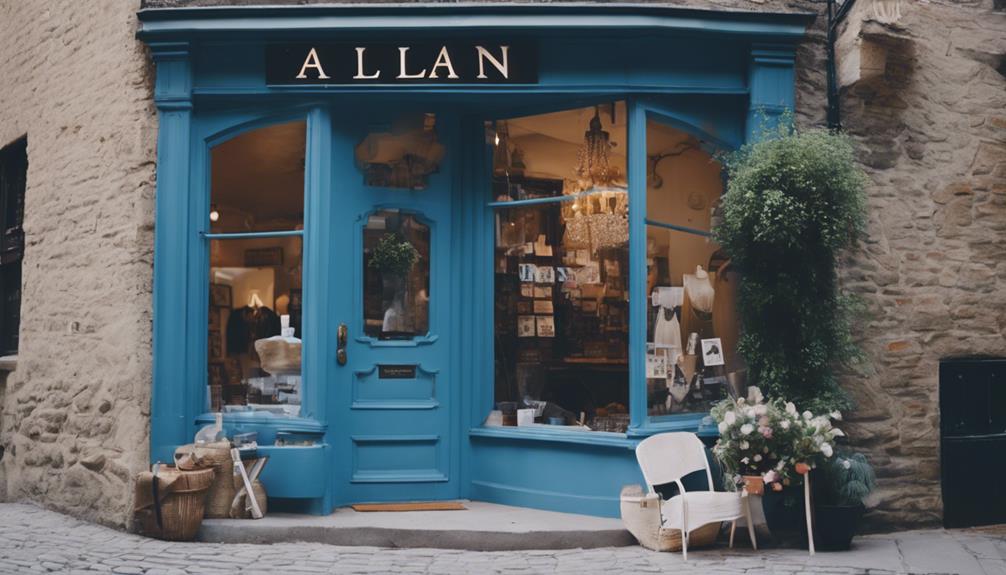
For those seeking the address of Alana Interiors, you can find the store located within Pinehurst Retail Park in Lurgan, Northern Ireland. Here are some key points about the address details:
- Convenient Location: Alana Interiors is situated in a prime location within Pinehurst Retail Park, making it easily accessible for visitors in Lurgan, Northern Ireland.
- Retail Park Setting: The store is part of a bustling retail hub in Northern Ireland, offering customers a diverse shopping experience with various amenities nearby.
- Accessibility: The address for Alana Interiors is designed for easy access, ensuring that customers can locate the store without any hassle.
Alana Interiors' address within Pinehurst Retail Park in Lurgan, Northern Ireland, provides a convenient and accessible location for visitors looking to explore the store's offerings. Being part of a vibrant retail environment adds to the overall shopping experience, making it a must-visit destination for those in the area.
How to Get to Alana

To reach Alana Interiors in Lurgan, Northern Ireland within Pinehurst Retail Park, simply follow the clear signs leading to the store's convenient location. Once you arrive, you'll find yourself at a bustling retail area where luxury fashion and home decor await. Alana Interiors isn't just any store; it's a department store that caters to your every need, from designer ladies fashion to exquisite home interiors. Plus, if you're feeling a bit peckish after all that shopping, there's a popular restaurant right there for you to enjoy.
For a sneak peek at what Alana Interiors has to offer, take a look at this table:
| Department | Offerings | Special Features |
|---|---|---|
| Ladies Fashion | Designer clothing | Trendsetting styles |
| Home Interiors | Decor items | Unique and elegant pieces |
| Restaurant | Dining experience | Delicious menu options |
Make your way to Alana Interiors and indulge in a day of shopping, dining, and exploring all in one convenient location!
Directions to Pinehurst Retail Park
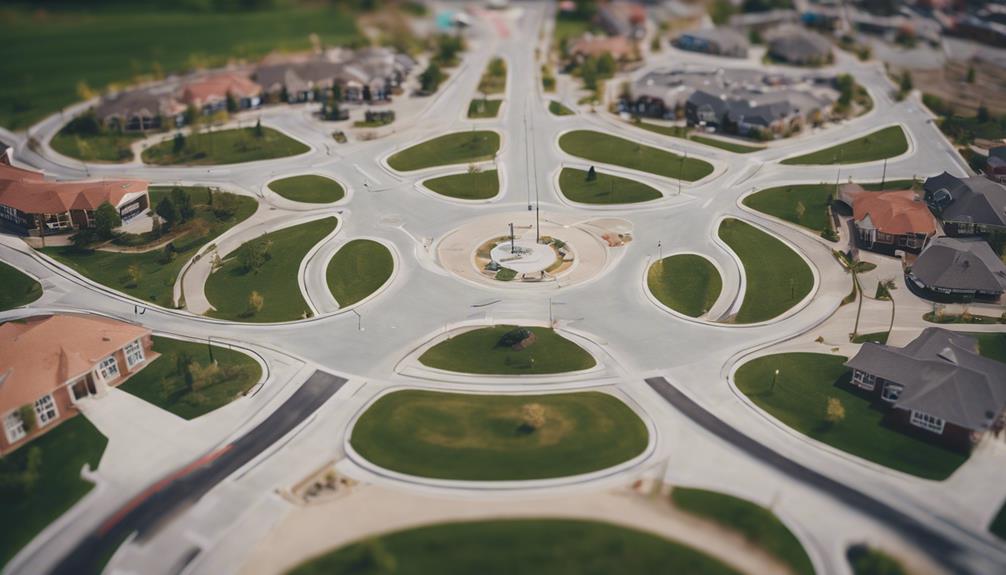
When heading to Pinehurst Retail Park, you'll want to know the store location details, keep an eye out for nearby landmarks, and check the parking availability. These points will guide you smoothly to Alana Interiors and guarantee you have a hassle-free shopping experience in Lurgan.
Store Location Details
Nestled within the vibrant Pinehurst Retail Park in Lurgan, Northern Ireland, you'll find Alana Interiors, a luxurious store with a popular cafe. If you're heading to this luxury department in Lurgan, here are some store location details to guide you:
- Convenient Access: Alana Interiors is easily accessible by car, and the retail park offers ample parking facilities for visitors.
- Bustling Area: Situated in a bustling area, Pinehurst Retail Park provides a variety of shopping and dining options for a delightful experience.
- Scenic Surroundings: Enjoy the scenic surroundings and vibrant atmosphere of the retail park while exploring the luxury offerings at Alana Interiors.
Nearby Landmarks
If you're seeking out Pinehurst Retail Park in Lurgan, your journey will likely take you past notable landmarks such as the M1 motorway. Alana Interiors, nestled within the retail park, is a treasure trove for home interiors enthusiasts.
As you make your way towards this vibrant destination, you'll pass by Lurgan Park and the picturesque Craigavon Lakes. Situated off Lakeview Road, Pinehurst Retail Park beckons with its array of offerings, including luxury fashion, delightful home interiors, and a popular cafe.
Whether you're in search of chic decor pieces or stylish furniture, Alana Interiors is a must-visit spot. So, soak in the beauty of the surroundings as you head towards this haven of exquisite home decor items.
Parking Availability
As you approach Pinehurst Retail Park in Lurgan, you'll find ample car parking facilities available, including free parking for up to 3 hours, right at the door of Alana Interiors. Parking facilities at Alana Interiors aim to make your shopping experience convenient and stress-free. Here's what you can expect:
- Free Parking: Enjoy the convenience of parking for up to 3 hours without any charges.
- Close Proximity: Park right at the door of Alana Interiors, ensuring easy access to the store.
- Enhanced Accessibility: Designed to cater to customers driving to the store, the parking facilities are strategically located for your convenience.
Visit Alana Interiors at Pinehurst Retail Park and indulge in a hassle-free shopping experience with convenient parking options.
Alana Interiors in Northern Ireland
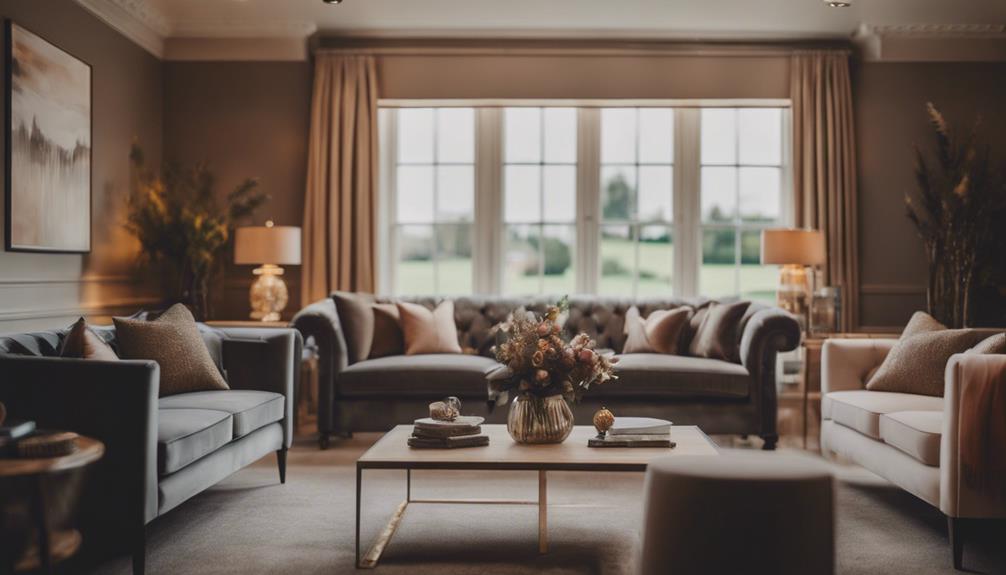
Located in Lurgan, Northern Ireland, within the Pinehurst Retail Park, Alana Interiors offers a luxurious shopping experience with designer ladies fashion, lavish home interiors, and a popular restaurant. If you appreciate luxury and enjoy browsing through high-end fashion and exquisite home decor, Alana Interiors is a must-visit destination in Northern Ireland. The store prides itself on providing a sophisticated shopping environment where you can explore the latest trends in fashion and home design.
Alana Interiors in Northern Ireland not only caters to your shopping needs but also offers a delightful dining experience. The on-site restaurant, Cafe Alana, serves breakfast until 11.30 am and boasts a diverse lunch menu. It's no wonder that Alana Interiors is ranked #3 out of 4 Quick Bites in Lurgan, showcasing its popularity among locals and visitors alike. Visitors often praise the relaxing atmosphere at Alana Interiors, making it a lovely spot to unwind and savor quality food while enjoying the luxurious surroundings.
Discover Cafe Alana at Alana Interiors
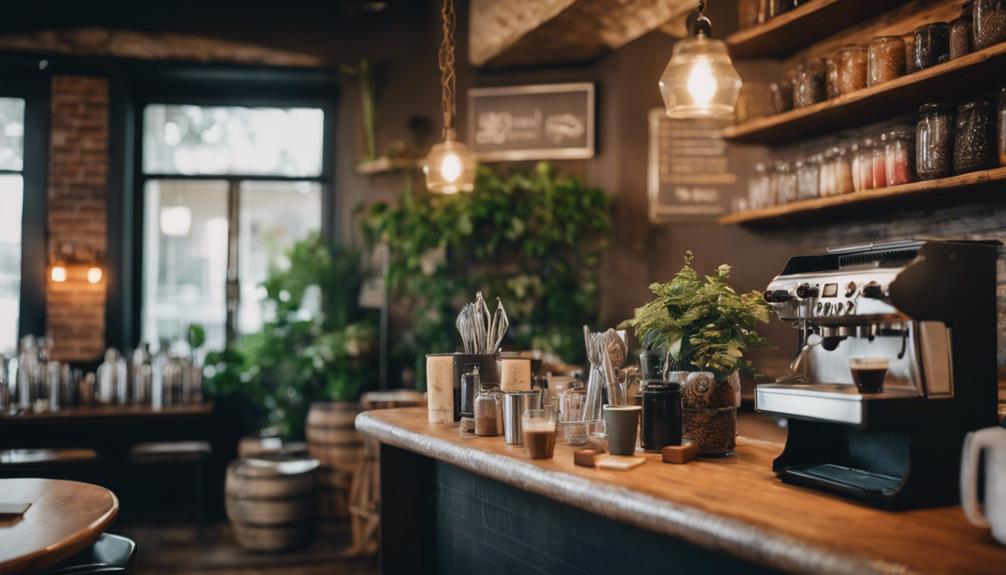
Step inside and immerse yourself in the inviting ambiance of Cafe Alana at Alana Interiors in Lurgan, Northern Ireland. At Cafe Alana, you can treat yourself to a delightful culinary experience that will surely satisfy your taste buds.
Here are a few things to know about this charming cafe:
- Location: Nestled within Alana Interiors, Cafe Alana provides a cozy setting where you can enjoy a relaxing meal or a quick snack while exploring the wonders of Alana Interiors.
- Menu Variety: Indulge in a scrumptious breakfast served until 11.30 am or choose from a range of lunch options like lasagne, wraps, paninis, sandwiches, and hot food. Don't forget to save room for their delectable desserts, including Pavlova, Apple Tarts, and a Gluten-Free range of Traybakes, all freshly made each morning.
- Customer Experience: Visitors rave about the friendly staff and the diverse selection of hot and cold food available at Cafe Alana. The pleasant atmosphere makes it easy to find a table and enjoy the cozy environment while savoring your meal.
Exploring Alana's Inviting Atmosphere

Immerse yourself in the serene ambiance of Alana Interiors, where every corner beckons you to unwind and indulge in tranquility. The interiors of Alana Interiors are carefully curated to create a welcoming and inviting atmosphere for all visitors. From the moment you step inside, you are greeted with cozy seating arrangements, soft lighting, and elegant decor that exudes warmth and comfort. The overall design of the space is aimed at providing a relaxing escape from the hustle and bustle of everyday life.
To give you a better idea of what to expect at Alana Interiors, here is a glimpse of the inviting atmosphere you can experience:
| Inviting Atmosphere at Alana Interiors | |
|---|---|
| Relaxing seating arrangements | Soft lighting |
| Elegant decor that exudes warmth | Cozy ambiance |
| Tranquil escape from daily stress | Welcoming vibes |
Whether you're looking to enjoy a cup of coffee, savor a delicious scone, or simply unwind in a peaceful setting, Alana Interiors offers the perfect retreat for anyone seeking a moment of relaxation.
Frequently Asked Questions
Who Owns Alana Interiors?
You own Alana Interiors if you're looking for the masterminds behind this luxury department store in Lurgan, Northern Ireland.
The family who runs the show guarantees a personal touch in every aspect, from in-store experiences to online services.
With a focus on quality products like fashion, home interiors, and a cozy cafe, they aim to cultivate long-lasting relationships with loyal customers.
The inviting atmosphere at Alana Interiors reflects their commitment to customer satisfaction.
Conclusion
To sum up, locating Alana Interiors in Lurgan is a piece of cake! Simply make your way to Pinehurst Retail Park and you'll uncover this hidden gem in Northern Ireland.
Featuring a welcoming ambiance and charming Cafe Alana, it's a must-visit for anyone seeking to enhance their home decor.
So, why delay? Head over to Alana Interiors and watch your interior design dreams come to life!
Interior
Why Interior Design Matters
Nurture your surroundings with thoughtful interior design choices that shape your daily experiences and emotions.
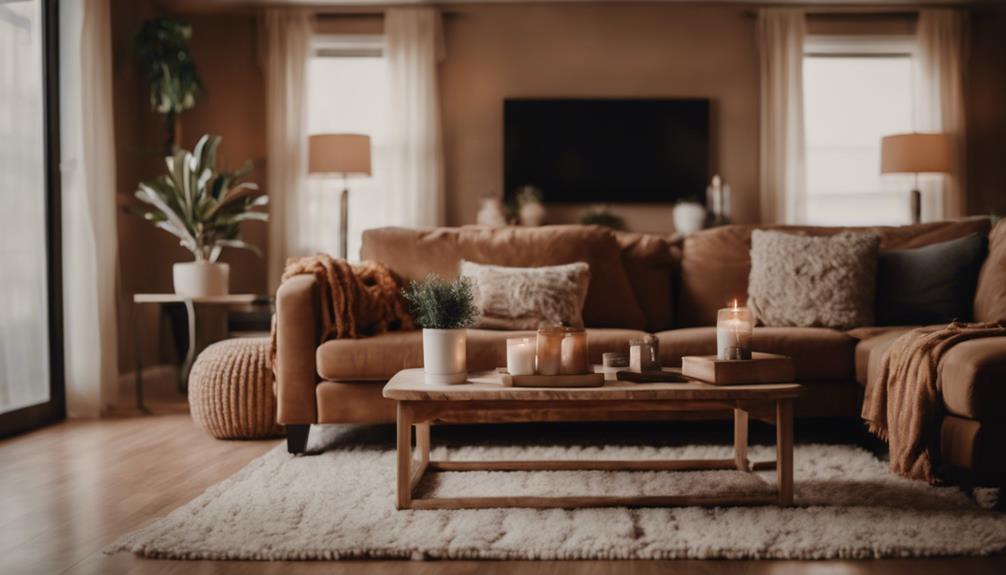
Interior design is crucial as it can affect how you utilize and feel within the areas surrounding you. Talented designers create arrangements that maximize efficiency and cater to your lifestyle seamlessly. Colors play a significant role in influencing your emotions – warm colors may uplift your mood, while cool tones promote relaxation. The design of your space serves as a platform for expressing yourself, reflecting your personality and style. By optimizing space with intelligent furniture selections and storage solutions, every inch becomes valuable. Interior design professionals offer expertise in combining functionality with aesthetics, working alongside architects to turn dreams into reality. Your environment has a bigger impact on you than you may realize.
Key Takeaways
- Interior design optimizes spaces for efficiency and aesthetics.
- Colors influence emotions and behaviors in different environments.
- Allows self-expression, reflecting individuality and creativity.
- Techniques like furniture placement maximize functionality and flow.
- Professionals enhance spaces through expertise, creativity, and collaboration.
Importance of Functional Spaces
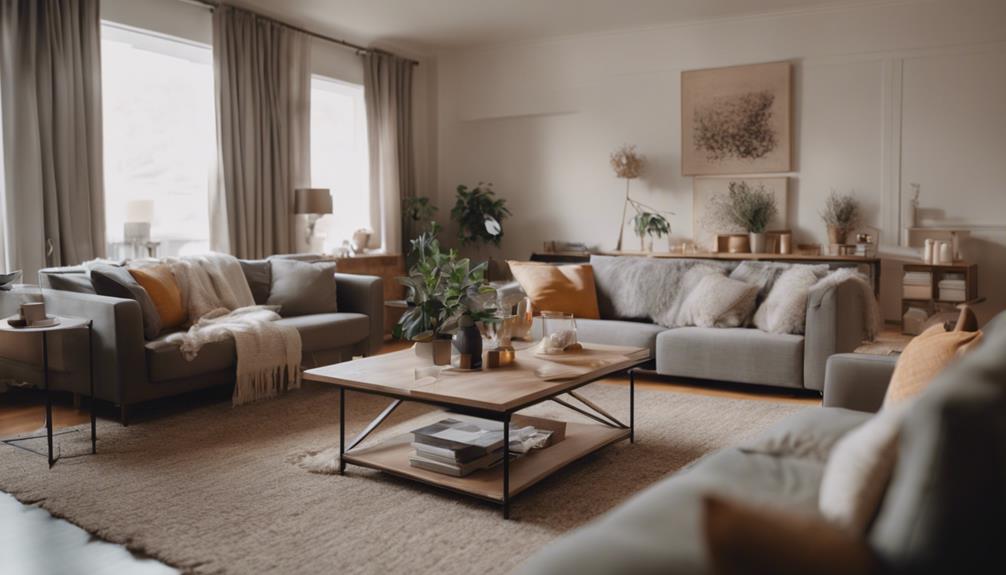
Functional spaces, crafted by skilled interior designers, are essential for maximizing efficiency and enhancing the overall user experience. When considering the layout of your interior, every decision made by an interior designer plays a pivotal role in how you interact with your space. Good design goes beyond aesthetics; it influences how you move through a room, how you feel in it, and how effectively you can accomplish tasks. Working with an interior designer allows you to make your space work for you, tailoring it to fit your lifestyle and needs perfectly.
Interior designers focus on the functionality of a space, ensuring that each design decision serves a specific purpose. By optimizing layout and flow, they create environments that not only look good but also support your daily activities. Whether it's arranging furniture to improve traffic flow or choosing the right lighting to enhance productivity, the impact of well-designed functional spaces on your well-being and productivity is significant.
Influence of Color on Emotions
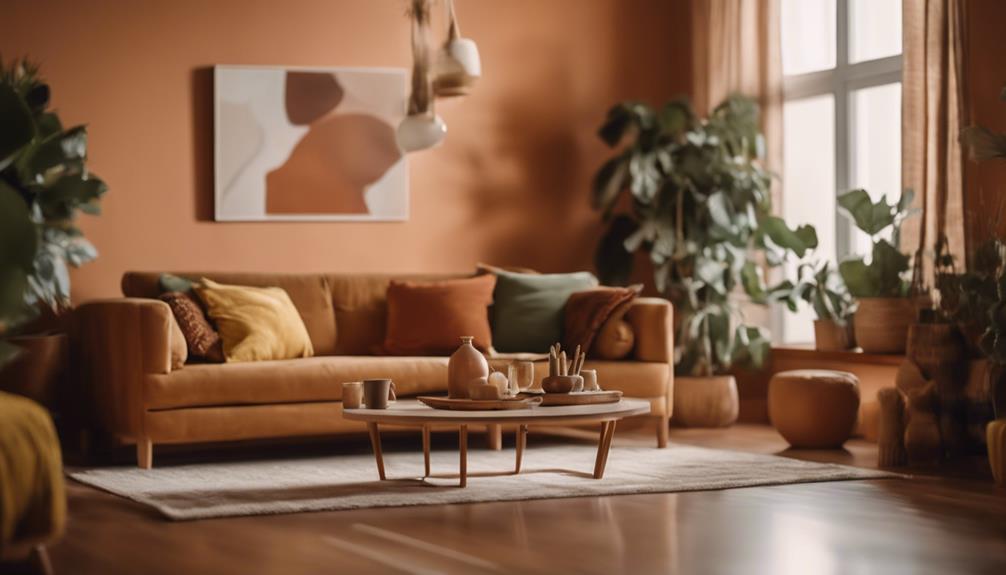
Color plays a significant role in influencing emotions within interior spaces. Interior designers strategically utilize color psychology to evoke specific feelings in different environments. For instance, warm colors such as red and yellow are often used in fast-food restaurants to stimulate appetite and create a sense of urgency. On the other hand, calming colors like blues and greens are prevalent in spaces like yoga studios to promote relaxation and tranquility.
Self-Expression Through Design
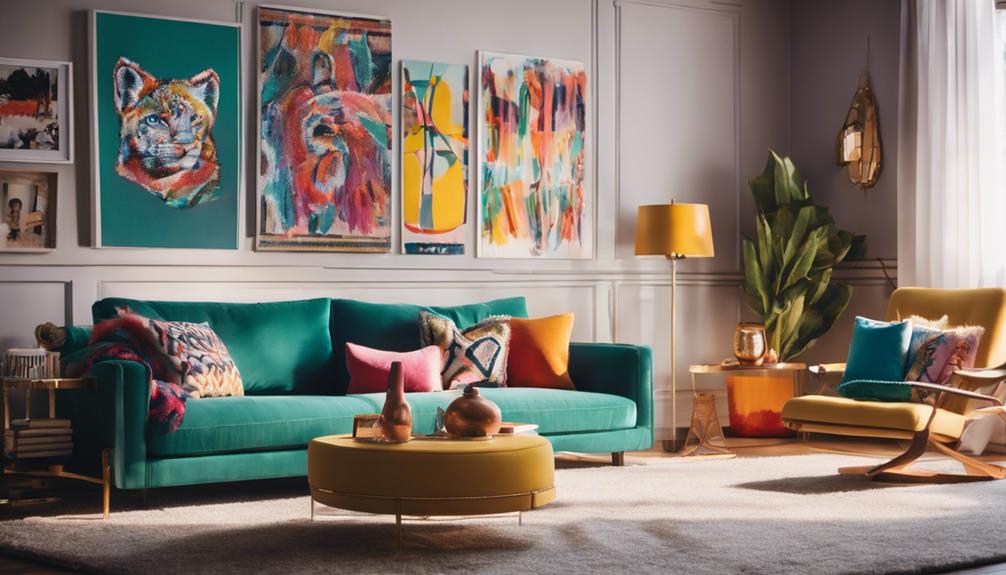
Expressing your individuality and personality through interior design choices is a powerful way to communicate your unique identity to others. When you make good interior design decisions, you showcase better contributions to your living or working environment.
The design of your space can reflect your values, preferences, and even your creativity. Visitors who enter your space can find insights into who you're based on the design elements you use. By using interior design services, you can enhance and highlight the positive qualities that make you stand out.
Interior design goes beyond just aesthetics; it's a form of self-expression and representation of your identity. Hence, it's important to find ways to use design to show the world who you're and what you stand for. Your space can be a canvas where you express yourself, make statements, and create a welcoming atmosphere that truly speaks to who you are.
Space Optimization Techniques
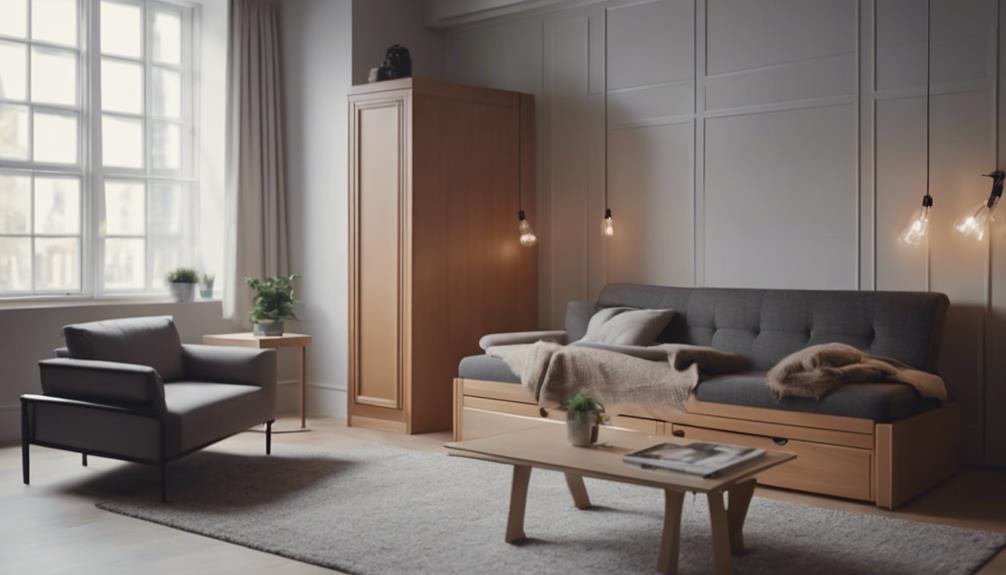
To maximize the functionality and flow within a given space, interior designers employ various space optimization techniques. By strategically placing furniture, implementing efficient storage solutions, and considering traffic flow, designers guarantee that every square foot in a design project serves a purpose. Tailoring these techniques to specific lifestyle needs results in spaces that are not only functional but also visually appealing. Let's explore further into some key space optimization techniques:
| Space Optimization Techniques | ||
|---|---|---|
| Strategic Furniture Placement | Efficient Storage Solutions | Traffic Flow Considerations |
These techniques aim to create an environment that is both organized and aesthetically pleasing, enhancing the overall usability of the space. Whether it's maximizing storage in a small apartment or creating an open layout for a family home, interior designers work diligently to meet the unique requirements of each design project. By implementing these strategies, spaces become more efficient, comfortable, and visually appealing, reflecting the lifestyle and preferences of the occupants.
Value of Interior Design Profession
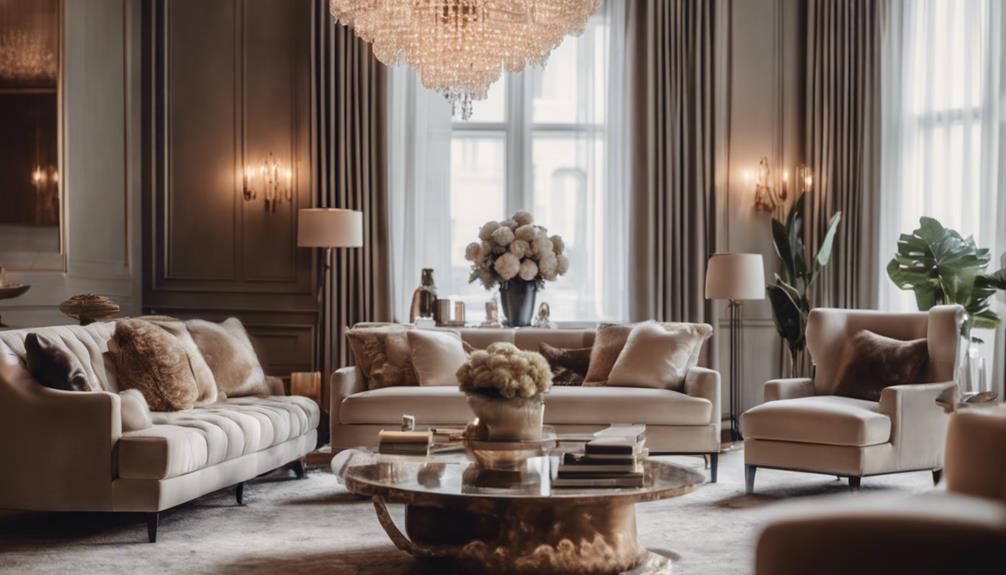
To appreciate the value that interior designers bring to a project, consider their expertise in optimizing spaces for functionality and aesthetics while preventing costly errors. Interior designers have an impeccable eye for design, ensuring your space not only looks beautiful but also functions efficiently.
When you hire an interior designer, you're not just getting someone to pick out paint colors; you're getting a professional who can create detailed design plans, work collaboratively with architects and builders, and make sure your project stays on track. The feedback you provide is never shared without your permission, allowing for a collaborative process where your ideas and vision are carefully considered.
Interior designers add significant value to projects by enhancing success and client satisfaction through their creative vision and expertise. So next time you're considering a design project, remember that working with an interior designer can truly elevate your space and make your design ideas come to life.
Frequently Asked Questions
Why Is Interior Design so Important?
Interior design is essential as it maximizes spaces for both functionality and aesthetics.
Effective interior design prevents costly mistakes during construction or renovation projects. Designers play a key role in enhancing project quality and efficiency, leading to client satisfaction.
Interior designers collaborate closely with builders and architects to achieve excellent results in projects.
The average designer fee, around 8-10% of the total project cost, provides significant value in space optimization and design oversight.
Why Interior Design Styles Are Important?
When considering interior design styles, it's crucial to understand their importance. These styles, like modern, traditional, or industrial, aren't just about aesthetics; they also reflect your unique personality and preferences.
How Does Interior Design Impact People?
Interior design impacts you in more ways than you might realize. It affects your mood, behavior, and even relationships.
Well-designed spaces can boost your productivity, creativity, and overall happiness. By creating a comfortable and inspiring environment, interior design helps you feel more at ease and motivated.
It shapes how you interact with your surroundings, influencing your emotions and well-being every day. So, pay attention to the design around you—it's making a difference in your life!
What Makes Interior Design Special?
Interior design is vital because it combines functionality and aesthetics to optimize spaces. Designers collaborate with architects and builders to create harmonious living or working environments. Their expertise prevents costly mistakes, avoiding delays and budget overages.
Typically charging 8-10% of the total project cost, designers provide significant value by enhancing interior spaces. Their role is essential in transforming areas into efficient and visually appealing spaces, adding value to projects.
Conclusion
In summary, interior design plays a vital role in creating functional and aesthetically pleasing spaces that reflect your personality and emotions.
By understanding the impact of color, optimizing space, and utilizing design techniques, you can transform any room into a place that speaks to you.
So next time you're thinking about redecorating, remember the significance of interior design in making your space truly your own. Let your creativity shine through!
-

 Vetted8 months ago
Vetted8 months ago15 Best EMS Foot Massagers for Neuropathy to Soothe Your Feet
-

 Vetted7 months ago
Vetted7 months ago14 Best Personalized Father's Day Gifts for Your Husband – Show Him You Care
-

 Alfresco6 months ago
Alfresco6 months agoAlfresco Stacker Doors: Seamless Indoor-Outdoor Living!
-

 Tableware and Dining Accessories1 week ago
Tableware and Dining Accessories1 week agoWhat Is the Meaning of the Word Tableware
-

 Tableware and Dining Accessories1 week ago
Tableware and Dining Accessories1 week agoWhen Is Tableware on Sale at Hobby Lobby
-

 Tableware and Dining Accessories1 week ago
Tableware and Dining Accessories1 week agoWhich of the Following Is Not Classified as Tableware
-

 Craft and Textiles8 months ago
Craft and Textiles8 months ago15 Best Places to Buy Appliances for Your Home – Top Retailers Reviewed
-

 Tableware and Dining Accessories1 week ago
Tableware and Dining Accessories1 week agoWhat Is the Hindi Meaning of Tableware







